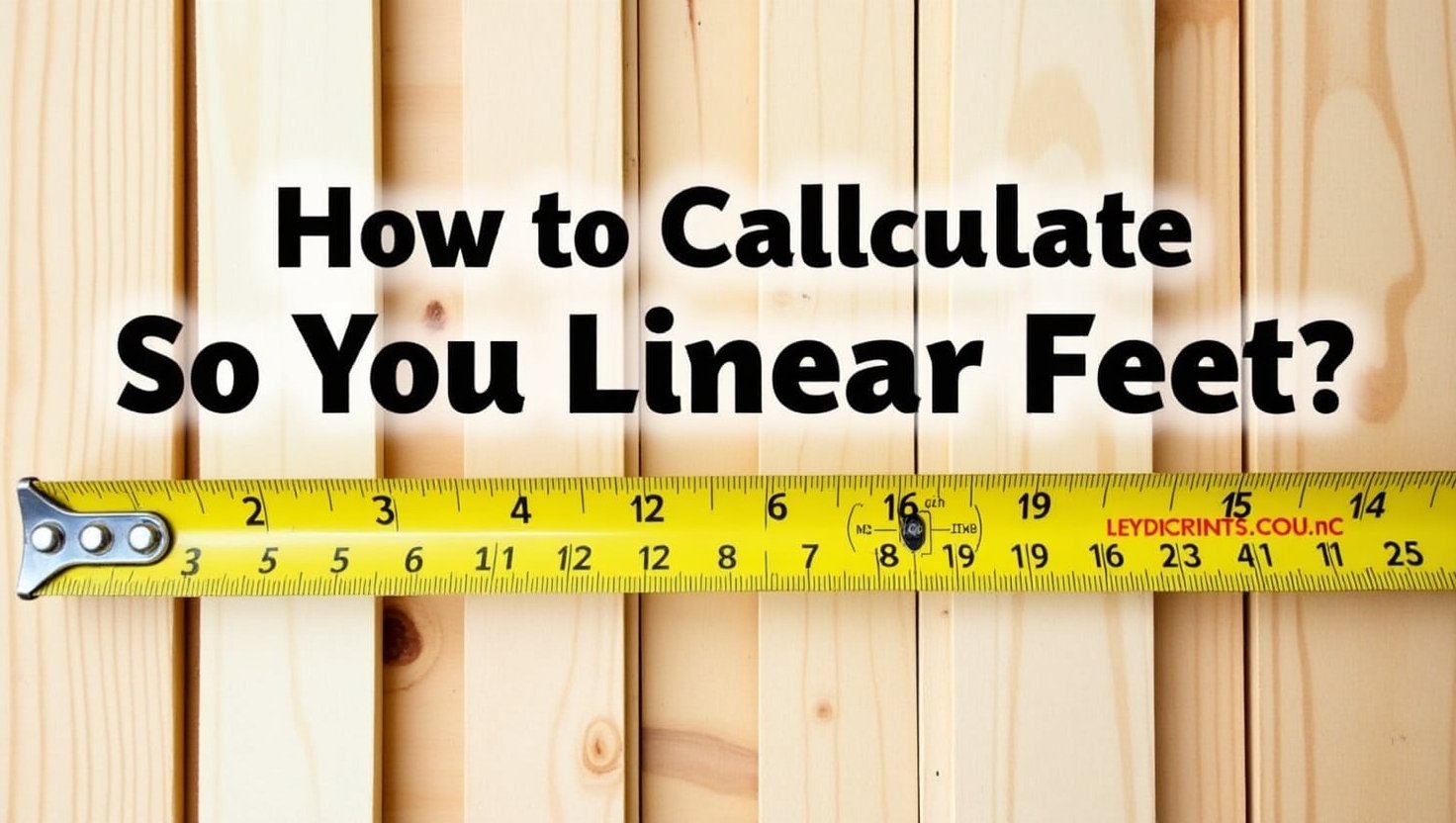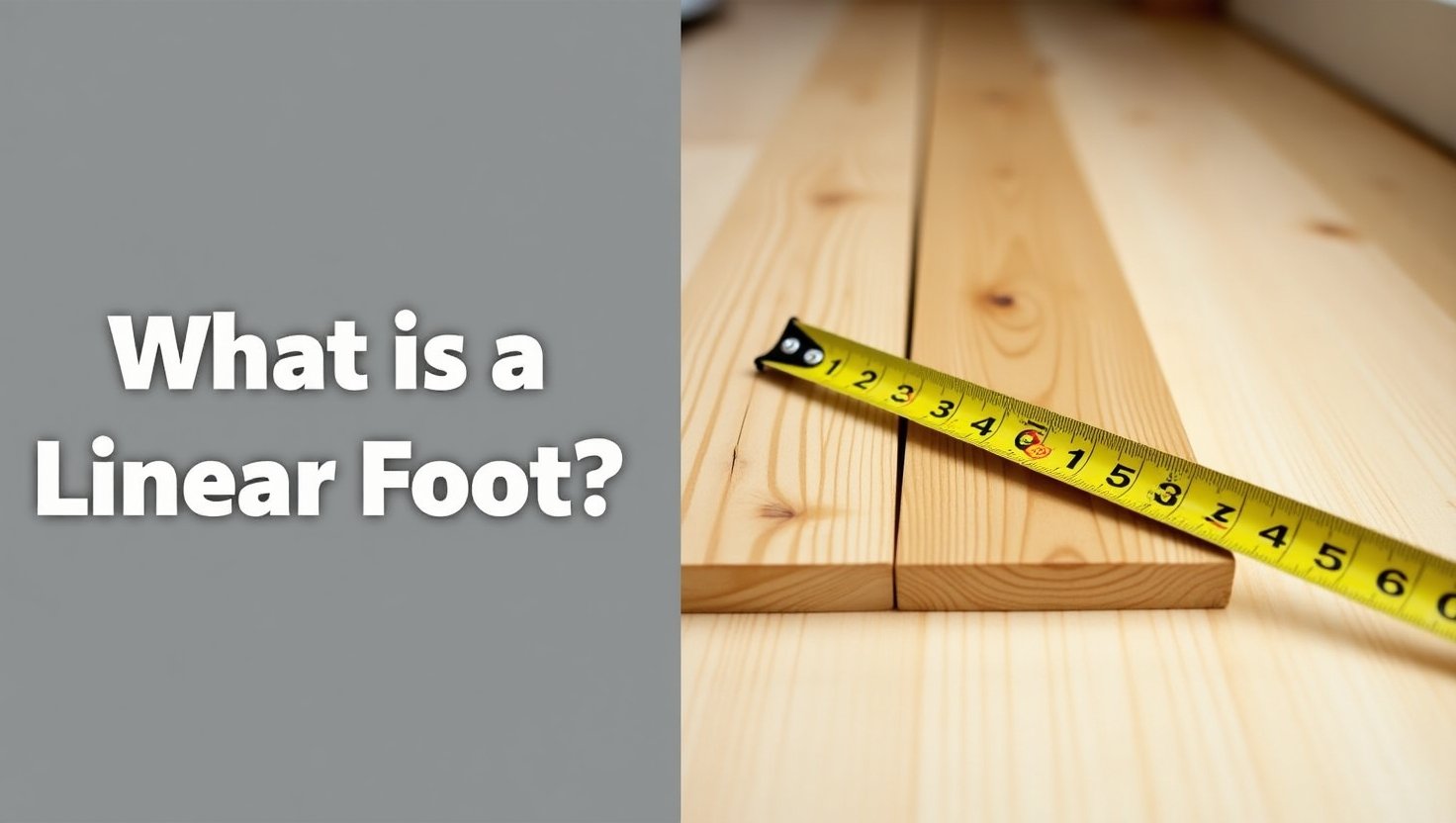Measure Smarter with the Linear Feet Calculator
If you’re handling a construction, renovation, or DIY project in the United States, understanding linear feet is one of the most important measurement skills you can master. Whether you’re buying lumber, calculating fencing, or estimating trim, accuracy matters.
Our Linear Feet Calculator ensures you get exact measurements without the hassle of manual conversion. It’s designed to help contractors, builders, and homeowners save time, reduce waste, and make smarter purchasing decisions.

Calculate Linear Feet
What is a Linear Foot?
A linear foot measures straight-line distance — it’s simply one foot in length, equivalent to 12 inches or 30.48 centimeters. Unlike square feet, which measure area, or cubic feet, which measure volume, a linear foot only measures one dimension: length.
In practice, any object measured end to end — such as a piece of lumber or pipe — uses linear feet. The width or thickness doesn’t affect the measurement.
Example:
If a board measures 6 feet long, it equals 6 linear feet, regardless of whether it’s two inches or eight inches wide.
Also Read
Where Linear Feet Are Commonly Used
Linear feet are often used in industries where precise length measurement determines cost and planning, including:
- Construction and Carpentry: Lumber, metal rods, pipes, and beams
- Flooring Projects: Hardwood, carpet, or vinyl installations
- Shipping and Logistics: Freight dimensions and packaging estimates
- Home Improvement Work: Baseboards, trim, and crown molding
- Fencing and Decking Projects: Rails, boards, and post spacing
Accurate use of linear feet helps both professionals and DIYers avoid buying too much or too little material — saving time, money, and frustration.
Also Check our Tool: Linear Feet to Square Feet Calculator
Linear Feet Calculator
Summary
How to Calculate Linear Feet
Calculating linear feet manually is simple, but prone to errors during large projects. Here’s how it works:
- Measure the total length in inches.
- Divide the total by 12 to convert inches into feet.
- For example, 96 inches ÷ 12 = 8 linear feet.
- Sum up all lengths if you have multiple pieces or sections.
Our online calculator automates this process in seconds. Just input your measurements, and it instantly provides accurate linear footage — so you can confidently order the exact quantity of materials you need.
Why You Should Use the Linear Feet Calculator
Whether you’re a professional contractor or weekend hobbyist, using an automated tool ensures precision and convenience.
Benefits of our calculator:
- Removes the need for manual conversion
- Minimizes material waste and extra spending
- Provides instant, error-free results
- Improves project planning and budgeting
- Perfect for contractors, engineers, and homeowners alike
With our Linear Feet Calculator, you can focus more on completing your project and less on math.
Real-World Examples
- Example 1: Flooring Estimates
Installing new hardwood floors in a 12×10 room? You can measure each plank’s total length to determine how many linear feet you’ll need before ordering. - Example 2: Fence Installation
Planning to build a 100-foot long fence? The calculator helps determine material requirements for boards, posts, and rails — ensuring nothing goes to waste. - Example 3: Trim and Molding
For interior remodels, accurately measuring linear footage ensures every corner fits perfectly without multiple store trips.
Tips for Accurate Linear Measurement
- Always use a reliable tape measure or laser measuring tool.
- Double-check measurements before entering them in the calculator.
- Record total lengths of multiple materials separately.
- Round up slightly to account for cutting errors or joint gaps.
Why Accuracy Matters
Even a small measuring error can cause major problems—ordering too little material can delay projects, while ordering too much increases cost and waste. By using a Linear Feet Calculator, you maintain professional-quality results, increase efficiency, and stay within budget.
FAQs About Linear Feet Calculators
1. What is the difference between linear feet and square feet?
Linear feet measure length in one direction, while square feet measure area (length × width).
2. How many inches are in one linear foot?
One linear foot equals 12 inches.
3. How do I convert square feet to linear feet?
You can’t directly convert square feet to linear feet without knowing the width of the material. For example, if flooring is 2 feet wide, divide total square feet by the width (e.g., 100 sq. ft ÷ 2 ft = 50 linear feet).
4. Can I use this calculator for irregular shapes?
Yes. Measure each side separately and add them together before entering the total length into the calculator.
5. Why is linear measurement important in shipping?
Carriers often use linear feet to determine how much space your shipment takes in a trailer or container, affecting cost.
Final Thoughts
Accurate measurement is the foundation of successful projects. With our Linear Feet Calculator, you can plan smarter, save money, and reduce waste on every job. Whether you’re building a deck, laying flooring, or organizing shipments, this reliable tool ensures every inch — and every dollar — counts.
Use the calculator now to simplify your next project and measure like a pro.





